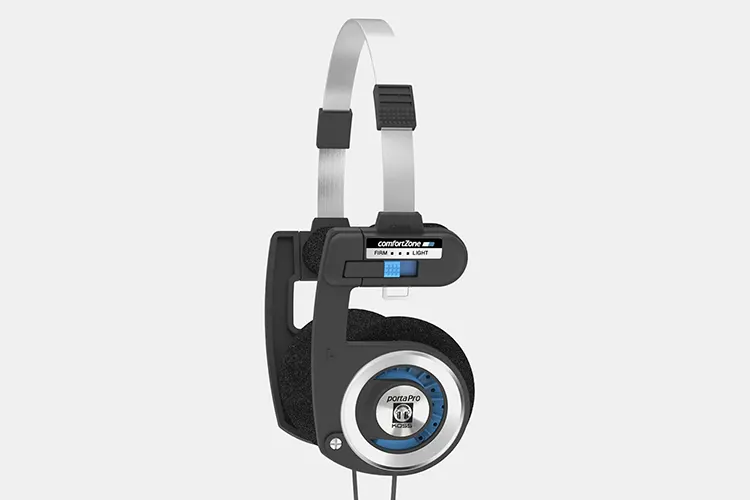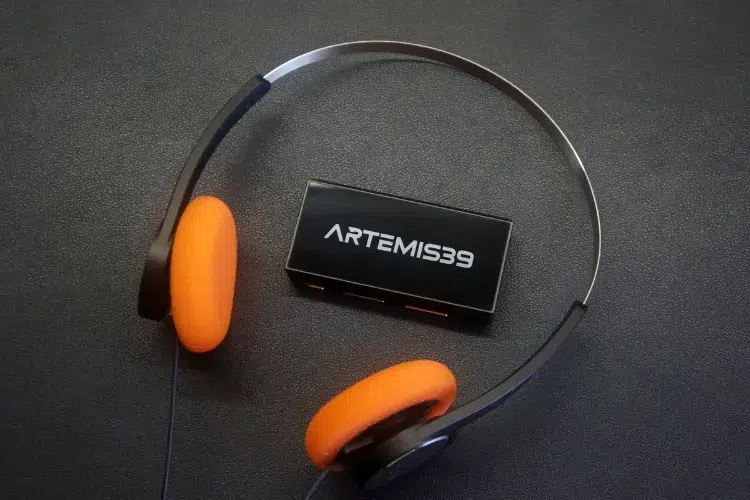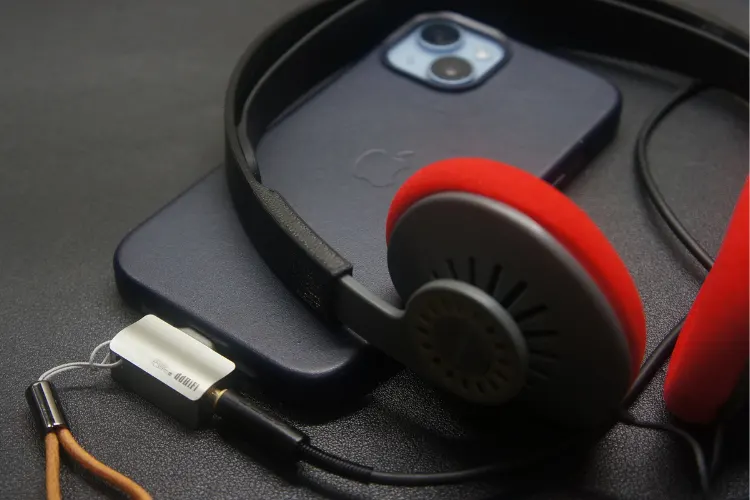Synergy
Efficiency
The FiiO SNOWSKY Wind is easy to drive, thanks to its 32Ω impedance and 116 dB/Vrms sensitivity. It reaches comfortable listening volumes, even from basic sources like a laptop headphone jack, smartphones, or a budget dongle.
Even onboard sound from my Windows and macOS machines delivered enough power to make the Wind sing at comfortable listening levels.
Throughout my testing, I tried the Wind with my FiiO K11 R2R, ddHiFi TC35Pro E2, iFi audio GO link Max, 7Hz Artemis39, and the SNOWSKY ECHO MINI DAP.
I observed slightly better staging performance when the Wind was driven from a more powerful source like the GO link Max.
Pairings
Given the Wind’s bright tuning, I found it paired best with warmer sources like the K11 R2R and the 7Hz Artemis39. While the Wind doesn’t need the extra power these sources provide, they did help widen the soundstage slightly and gave the overall presentation a touch more depth.
The added warmth also helped tame the treble edge to some extent, dialing down the harshness just a bit. That said, even with smoother sources, the Wind retained a generally sharp and bright signature that may still be fatiguing for some listeners over extended sessions.
The warmth of the Echo Mini paired well with the Wind as well. It did not do enough to remove its shrill sound signature completely, but it made it more manageable while also letting me listen to the headphones without being tethered to my phone or laptop.
I initially tried pairing my daily dongle, the ddHiFi TC35Pro E2 Lightning, with the Wind, however, I found that its more neutral presentation still highlighted the fatiguing sound signature of the Wind.
Select Comparisons
Koss KPH30i
Technical
The FiiO SNOWSKY Wind features a 40mm dynamic driver with a Japanese polymer diaphragm, offering an impedance of 32Ω and a sensitivity of 101 dB/mW.
This configuration makes it relatively easy to drive, suitable for most portable devices without the need for additional amplification.
In contrast, the Koss KPH30i is equipped with a 30mm dynamic driver, presenting an impedance of 60Ω and a sensitivity of 101 dB SPL.
While it requires slightly more power than the Wind, it remains efficient enough for use with smartphones and portable players.
Design
The FiiO SNOWSKY Wind embraces a retro aesthetic reminiscent of classic Walkman-era headphones, featuring vibrant orange foam earpads and a minimalist stainless-steel headband.
Its lightweight construction, weighing approximately 50g, ensures a barely-there feel during use.
The Koss KPH30i also sports a vintage-inspired design but opts for a more subdued color palette. It incorporates a suspension-style headband and soft foam earpads, providing a comfortable fit for extended listening sessions.
However, its build is slightly bulkier compared to the Wind, and it weighs slightly more. In practice, I found the Wind to be more comfortable. Aside from weighing less, it also had less clamp force as opposed to the KPH30i, which applied a light squeeze to my head.
Compared to the thicker Yaxi pads on my KPH30i, the pads on the Wind were less prone to causing hotspots as well, making it easier to wear throughout the day without any discomfort.
Performance
The FiiO SNOWSKY Wind leans heavily into a bright sound signature, offering a wide soundstage but struggling in terms of overall tonal balance. Its bass is noticeably lacking in both depth and punch, with subpar sub-bass and mid-bass performance that fails to bring out the weight of kick drums or bass guitars.
The midrange fares slightly better in resolution but suffers from a grainy texture, making vocals and instruments sound unnatural, particularly higher-pitched vocals, which can become sibilant and fatiguing.
The treble is sharp and prone to harshness, especially in tracks with lots of hi-hats or snare, and while it adds a sense of air, it can overwhelm the overall mix.
In contrast, the KPH30i offers a more balanced and musical tuning. Its bass has better extension and impact, adding fullness to tracks across various genres.
The mids are a standout strength, clear, natural, and well-articulated, making it excellent for vocals and acoustic instruments. The treble is detailed yet smooth, avoiding the harsh peaks present in the Wind.
While the KPH30i’s soundstage is narrower, it compensates with better imaging and instrument separation, making for a more coherent and enjoyable listening experience.

Koss Porta Pro
Technical
The FiiO SNOWSKY Wind features a 40mm dynamic driver with a semi-open design, a sensitivity of 106 dB, and a relatively low impedance of 32Ω, making it easy to drive with virtually any device.
The Koss Porta Pro, similar to the KPH30i, also uses a dynamic driver setup with a 60Ω impedance and sensitivity of 101 dB, requiring just a touch more power to get going but still easily driven by phones, dongles, and laptops.
Design
Both headphones take clear inspiration from retro portable audio gear, but the execution is quite different.
The SNOWSKY Wind has a minimalist, almost barebones design with a thin metal headband, plastic yokes, and circular cups snapped in with some articulation.
My black unit, paired with bright orange earpads, pops visually and feels very fashion-forward. Branding elements like the “Born for Music” logo and vented rear grills add flair, but the overall feel is utilitarian and lightweight.
Meanwhile, the Koss Porta Pro leans fully into nostalgia with its collapsible metal headband, soft temple pads, and retro-style earcups. Its build feels a bit more refined and time-tested despite still being mostly plastic. The Porta Pro folds into a compact form factor as well for easy portability.
I found the Wind to be more comfortable, being easier to wear for long periods throughout the day.
Performance
The FiiO SNOWSKY Wind has a bright, treble-heavy sound signature that can be fatiguing over time. Its bass is underwhelming in both extension and texture, struggling to deliver any meaningful sub-bass rumble or mid-bass punch. Instruments like bass guitars and kick drums lack presence and body.
The mids are decent in clarity but tend to sound grainy, especially with piano and string instruments, and female vocals can come off sibilant.
The treble is sharp and often overpowering, merging with upper mids into a harsh and sometimes metallic mix. While it boasts a wide soundstage and decent directional cues, its poor instrument separation and resolution limit its imaging.
In contrast, the Koss PortaPro offers a warmer and more engaging sound. Its bass is rich and full, delivering satisfying weight and slam without overwhelming the mix. The mids are lush and natural, particularly flattering to vocals and acoustic instruments.
Treble is smooth and relaxed, avoiding the harshness present in the Wind while still retaining a good amount of detail. Though its soundstage is more intimate, the imaging is superior. Each instrument has its space to breathe within the soundscape and is easily differentiable from one another.
My Verdict
The FiiO SNOWSKY Wind is an ambitious, yet very affordable, entry-level headphone that aims to blend retro aesthetics with modern portable usability.
Unfortunately, it’s extremely bright tonality results in a harsh and sibilant listening experience, with underwhelming bass performance and grainy mids that lack organic texture.
Its ultra-lightweight frame, breathable pads, and secure yet gentle clamp make it one of the most comfortable portable headphones I’ve used. Admittedly, its retro design does have some charm that I quite appreciate.
Ultimately, the Wind feels like a case of strong form and function being let down by its sonic tuning. If you’re particularly treble-tolerant or simply want an ultra-light, stylish headphone with a decent stage, it might still hold some value.
However, for those looking for a balanced and enjoyable sound, there are better-tuned options in the same bracket.
FiiO SNOWSKY Wind Technical Specifications
- Driver configuration: 40mm dynamic driver
- Impedance: 32 Ω
- Sensitivity: 101 dB/mW (@1kHz); 116 dB/Vrms (@1kHz)
- Connector: Fixed inline cable with 3-button remote and microphone
- Plug: 3.5mm TRRS





